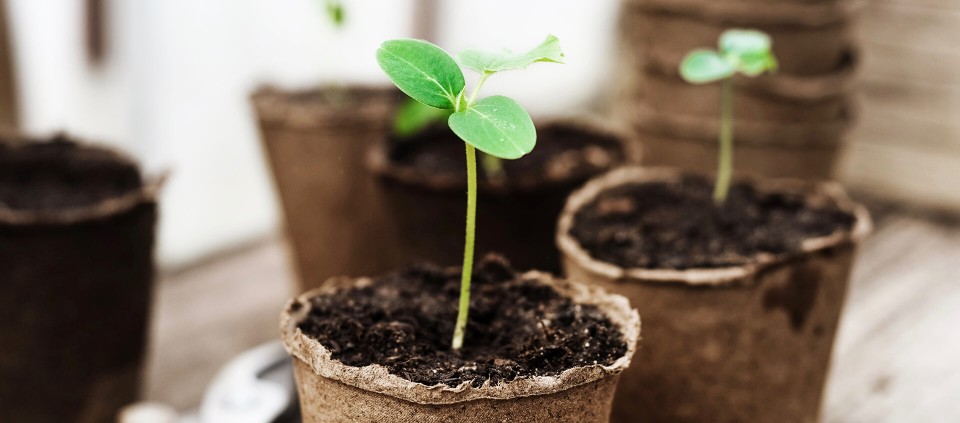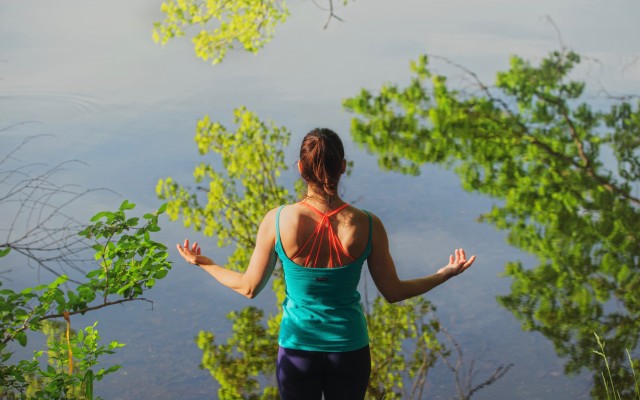A Mindful Spring Practice of Planting Seeds

March 19, 2020
Spring is here. The dawn chorus of birds is a sign that the earth is awakening—our avian friends are calling out in the early morning hours and building nests for the little ones on the way. Spring is also a time for planting seeds; March is the month of getting our “starters” going, when we put our seeds in little cups of soil and watch each day until those first beautiful little seedlings reach up through the soil toward the life-giving light of the sun. What a miracle to behold!
This spring is unique in many, many ways. All of us, especially those in more urban areas, are being called inside, away from others, away from places of gathering, which is not our normal tendency for this time of year. We too, like the rest of nature, are drawn to awake earlier and shake off winter, opening our senses and our bodies to the many beautiful manifestations of the season. This spring, if you are not able to move about in the ways you are accustomed to, or if you find yourself needing to shelter in place, only going out for essentials, it is important to keep your connection with nature (our natural habitat) intact.
Studies show that looking out a window on green space, having potted plants in your room, or simply living near green spaces can support physical healing, as well as providing resilience against stressful life events. The other good news is that there are so many ways that we can bring the natural world into our indoor spaces, and a perfect way for this time of year is to plant some seeds.
A Ritual of Renewal
This seasonal ritual of renewal can feed both our bellies and our souls. Whether we are starting a vegetable garden or cultivating plant friends to brighten our homes and keep us company, the connection we humans feel with plant people (for not only humans are “people”—plants and animals have awareness as well) is a vital part of life. We evolved with our relatives in the “more than human world”—our plant and animal friends, along with the great elements of earth, water, fire, air, and space. I believe that keeping the connections alive with all of these parts of ourselves is vital for health and well-being.
All you need is a small cup, a little healthy soil, and seeds. There are many online resources to help you grow whichever specific plant you decide to cultivate. And remember, you may be able to use seeds you have in your refrigerator right now. For instance, you could harvest seeds from inside a tomato or a squash you have on your counter.
The practice is to pay attention to your seedlings each day, and this is where mindfulness really comes in. Each day, you will spend time with your seedlings, making sure they are watered and have adequate light. Mindfulness is often defined as the practice of paying attention, on purpose, with curiosity. It is also defined as “remembering”—specifically, remembering what it is we are doing, right now. Nature meditation is a wonderful doorway into the practice because nature, as our natural habitat, captures our attention with its beauty and helps us to be present with minimal effort.
As you spend time with your seedlings, you will see them sprout and grow; you will learn about their unique qualities and characteristics. You might play music for them and even speak to them. (Don’t worry if you do—people have been speaking to plants for millennia; nothing could be more natural.)
Read Part 2 of this series:
If you aren’t able to plant seeds, but you have plants in your home, you might consider bringing them together so you can sit in your own little forest. This may sound silly, but access to plants is essential for our health and well-being, and creating time and space to connect with green space in this way can elevate mood, improve sleep, lower stress, increase immune system function, and provide a sense of perspective that only nature offers us.
A Mindful Practice with Plants
Here are a few steps to help you make your time with plants a mindfulness practice.
- Create a place (near a window if you can) that has good morning light. Have your potted seeds arranged in a way that is pleasing to the eye, and place a meditation cushion or chair here so you can sit comfortably and see out the window.
- Allow your eyes to close or soften your gaze on the floor in front of you. Invite a deep breath in through the nose and exhale through the mouth with a small sigh or sound (we call this the Letting Go breath). Repeat three to five times.
- Invite your attention into your body and simply notice how you are feeling. Be aware of physical sensations, emotions, thoughts, without trying to “fix” or change them … as if these layers of human experiences were clouds floating by. Let them be. Just notice.
- As you are ready, open your eyes or lift your gaze. Spend a few minutes just sitting with your potted seeds/seedlings/plants. Notice what you can see. Really inquire. What small details can you notice? Lift up a pot carefully and examine the soil. Do you notice individual grains of sand, small rocks, little rootlets?
- How does the soil smell? If you touch it, how does it feel? If your plant is sprouted and strong, can you brush it against your cheek? How does that feel?
Plants have so much to teach us, and with mindfulness we can be more present for their teachings. I hope that this little practice supports you in this time of challenge, and maybe plants a seed that will grow in you for years to come.
Micah Mortali is lead Kripalu faculty, the Founder of the Kripalu School of Mindful Outdoor Leadership and author of Rewilding.
Full Bio and Programs